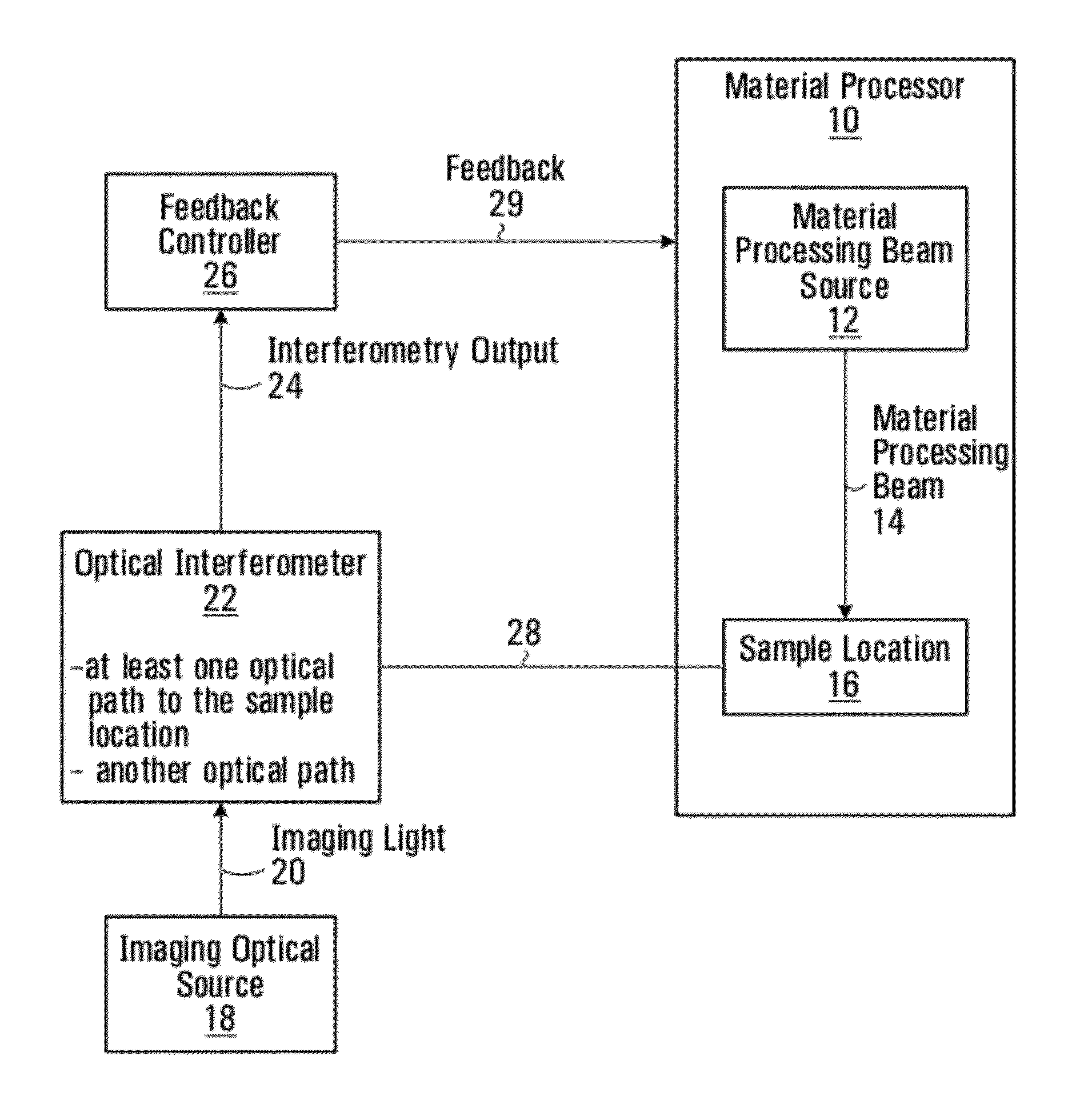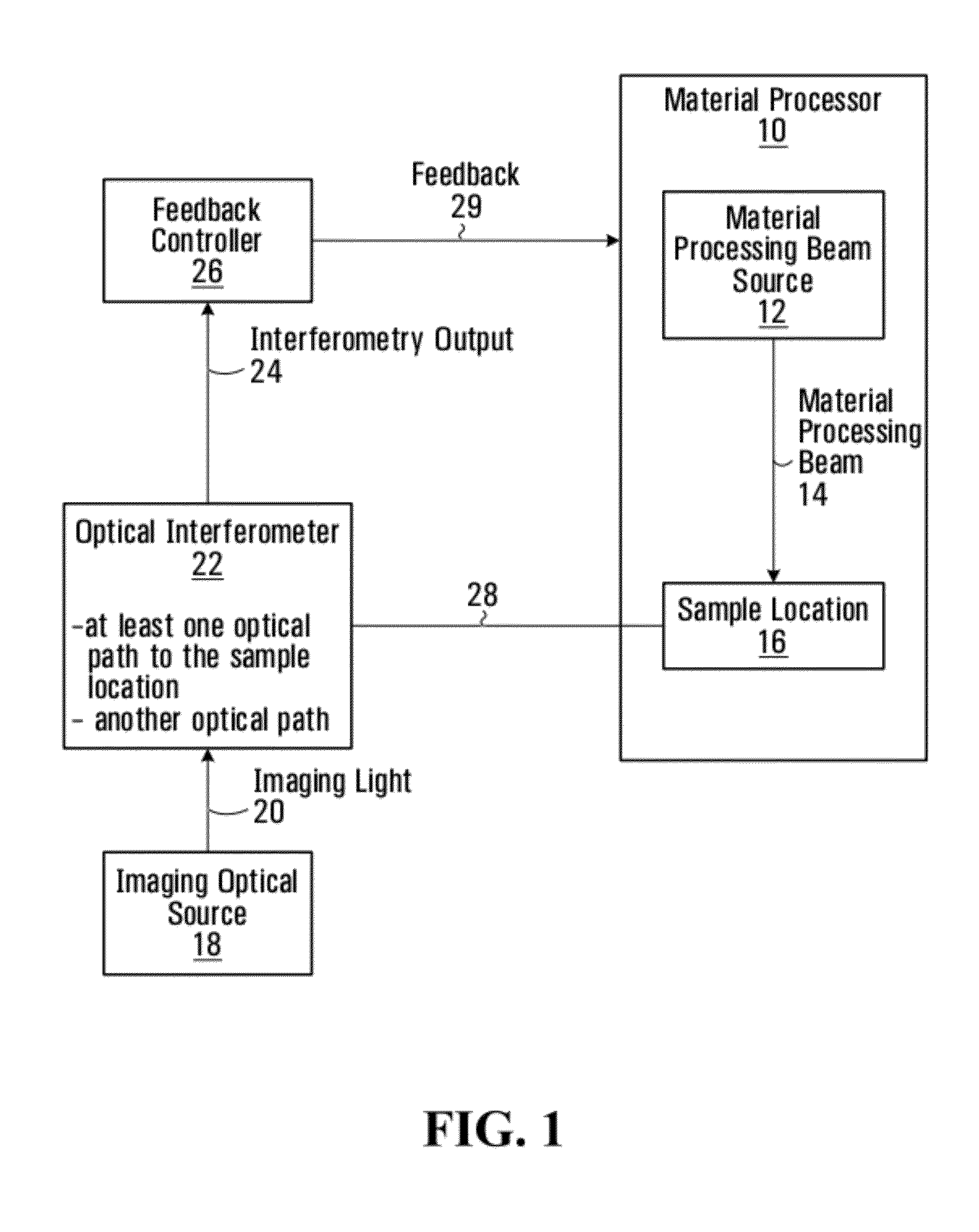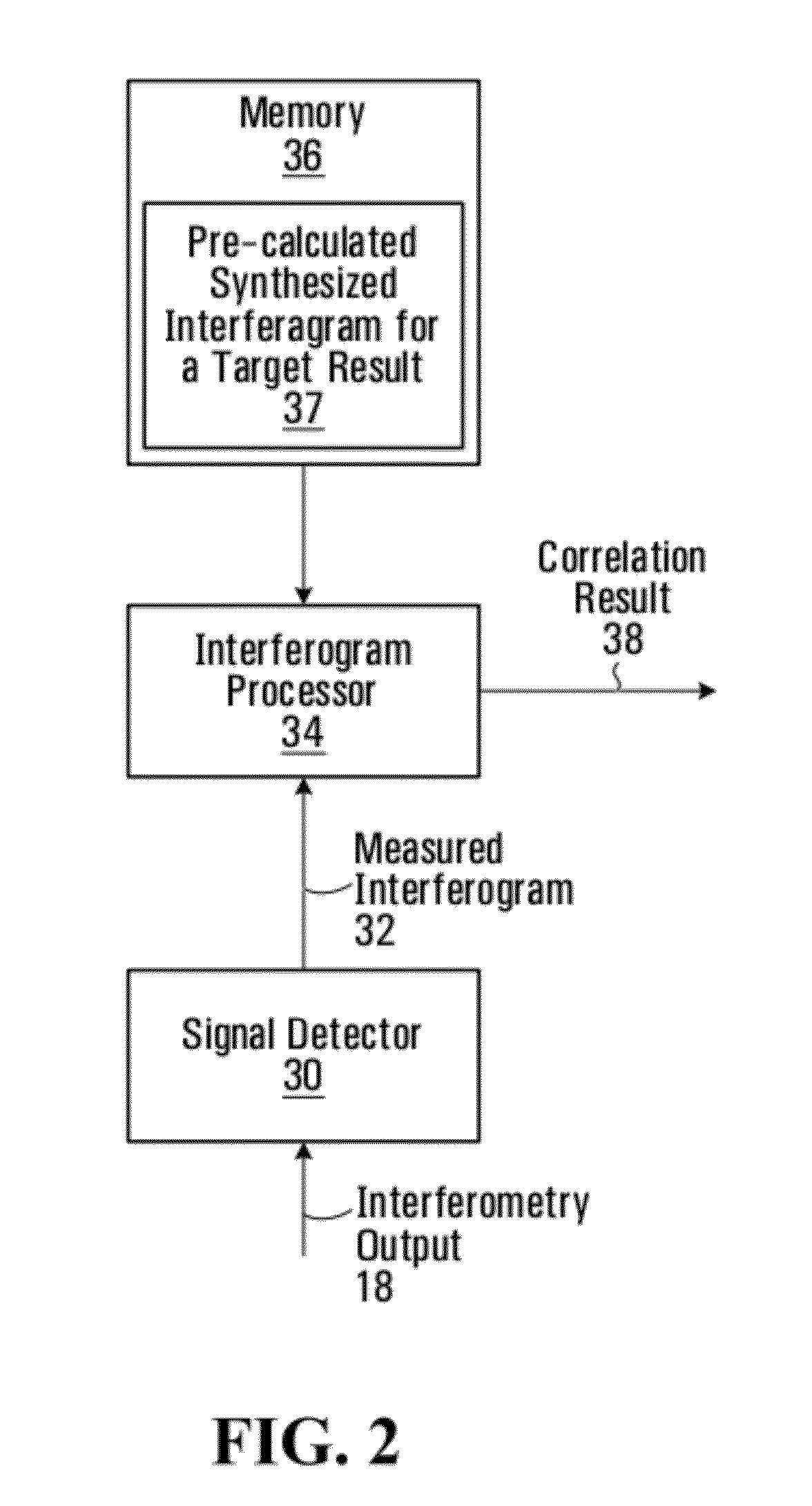Methods and systems for coherent imaging and feedback control for modification of materials
a technology of coherent imaging and feedback control, applied in auxillary shaping apparatus, spectrometry/spectrophotometry/monochromator, optical radiation measurement, etc., can solve the problems of affecting the standard technique, affecting the safety and efficiency of use of current mechanical tools, and affecting the axial direction of the laser's action
- Summary
- Abstract
- Description
- Claims
- Application Information
AI Technical Summary
Benefits of technology
Problems solved by technology
Method used
Image
Examples
implementation example showing verification
of Drilling Control
[0412]Using the fully automatic depth control provided by the Inline Coherent Imaging system shown in FIG. 5, 14 holes were drilled at depths that vary steadily by 30 micrometer from hole to hole. The homodyne filter algorithm running on a PC (one embodiment of image processing electronics, 332) was used to efficiently process the raw imaging data from the silicon line camera (330) and make a determination as to whether further machining laser exposure was required to achieve the desired depth. A user programmed the desired depth(s) for the series of holes into the PC. The PC read this programming and synthesized the appropriate homodyne waveforms to mix with the raw imaging data to obtain the sample reflectivity at the target depth. Through the course of drilling the hole, when a selected threshold was met from the homodyne output (in this case, 5 times the RMS intensity of the noise floor), the PC signals the feedback controller (334) to cease the process. In th...
PUM
| Property | Measurement | Unit |
|---|---|---|
| depth | aaaaa | aaaaa |
| width | aaaaa | aaaaa |
| width | aaaaa | aaaaa |
Abstract
Description
Claims
Application Information
 Login to View More
Login to View More - R&D
- Intellectual Property
- Life Sciences
- Materials
- Tech Scout
- Unparalleled Data Quality
- Higher Quality Content
- 60% Fewer Hallucinations
Browse by: Latest US Patents, China's latest patents, Technical Efficacy Thesaurus, Application Domain, Technology Topic, Popular Technical Reports.
© 2025 PatSnap. All rights reserved.Legal|Privacy policy|Modern Slavery Act Transparency Statement|Sitemap|About US| Contact US: help@patsnap.com



